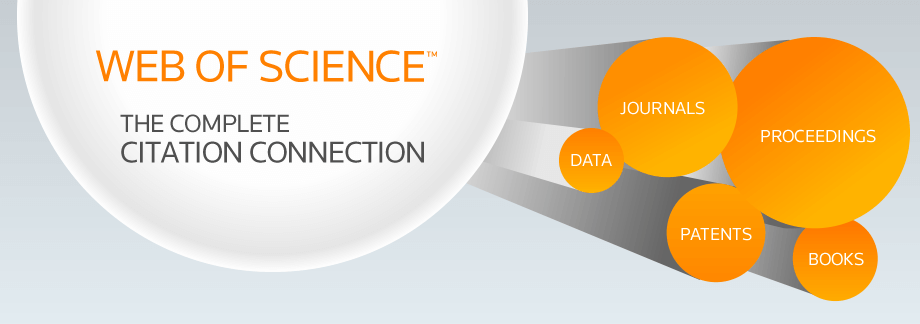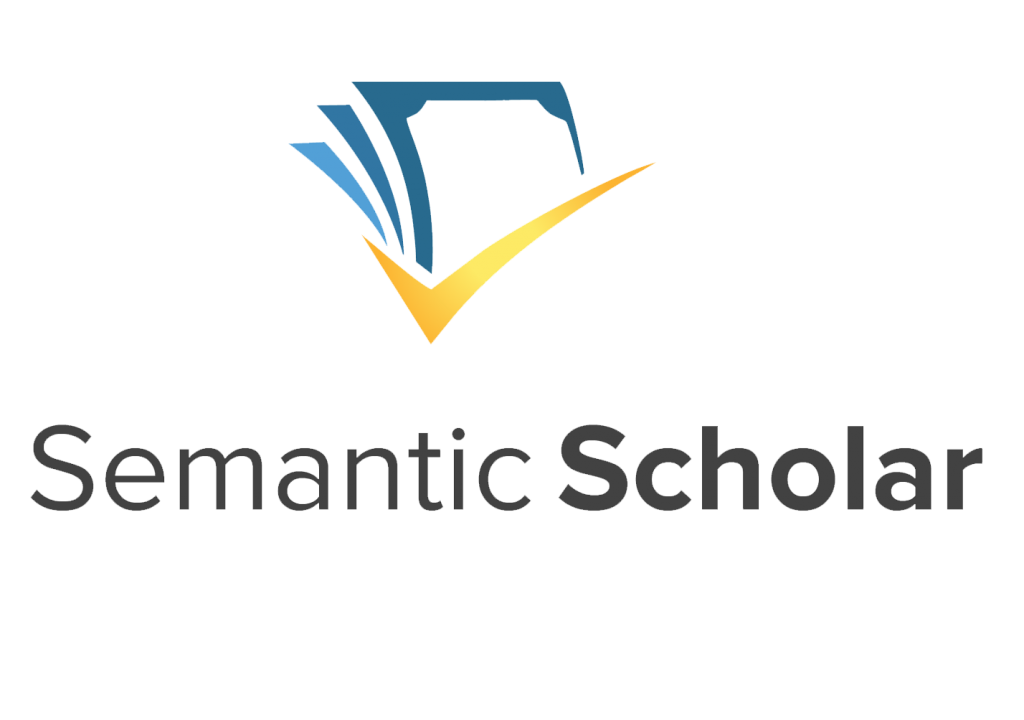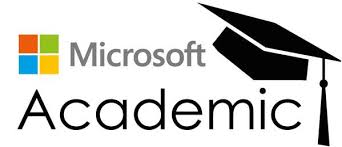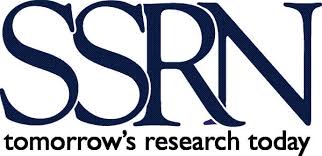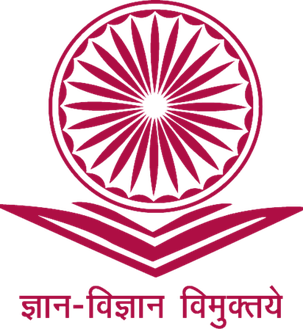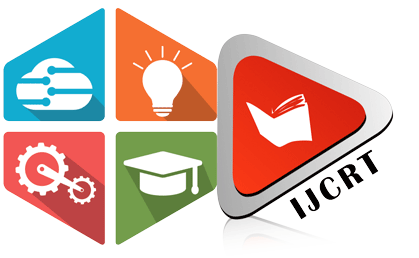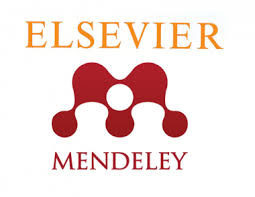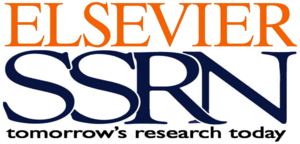INTERNATIONAL JOURNAL OF CREATIVE RESEARCH THOUGHTS - IJCRT (IJCRT.ORG)
International Peer Reviewed & Refereed Journals, Open Access Journal
IJCRT Peer-Reviewed (Refereed) Journal as Per New UGC Rules.
ISSN Approved Journal No: 2320-2882 | Impact factor: 7.97 | ESTD Year: 2013
Call For Paper - Volume 13 | Issue 11 | Month- November 2025
Scholarly open access journals, Peer-reviewed, and Refereed Journals, Impact factor 7.97 (Calculate by google scholar and Semantic Scholar | AI-Powered Research Tool) , Multidisciplinary, Monthly, Indexing in all major database & Metadata, Citation Generator, Digital Object Identifier(CrossRef DOI)
Contact Us Click Here
WhatsApp Contact Click Here
Volume 13 | Issue 7 |
| IJCRT Journal front page | IJCRT Journal Back Page |
Paper Title: Accuracy Enhancement in Network Anomaly Detection Using Machine Learning Techniques
Author Name(s): Varad Krishna Marawar, Lokesh Pramod Meshram, Hanuman Gajanan Limbalkar, Kaif Mulla
Published Paper ID: - IJCRT2507287
Register Paper ID - 290863
Publisher Journal Name: IJPUBLICATION, IJCRT
DOI Member ID: 10.6084/m9.doi.one.IJCRT2507287 and DOI :
Author Country : Indian Author, India, 411035 , Akurdi, 411035 , | Research Area: Science and Technology Published Paper URL: http://ijcrt.org/viewfull.php?&p_id=IJCRT2507287 Published Paper PDF: download.php?file=IJCRT2507287 Published Paper PDF: http://www.ijcrt.org/papers/IJCRT2507287.pdf
Your Paper Publication Details:
Title: ACCURACY ENHANCEMENT IN NETWORK ANOMALY DETECTION USING MACHINE LEARNING TECHNIQUES
DOI (Digital Object Identifier) :
Pubished in Volume: 13 | Issue: 7 | Year: July 2025
Publisher Name : IJCRT | www.ijcrt.org | ISSN : 2320-2882
Subject Area: Science and Technology
Author type: Indian Author
Pubished in Volume: 13
Issue: 7
Pages: c521-c534
Year: July 2025
Downloads: 144
E-ISSN Number: 2320-2882
Abstract
Network anomaly detection is an essential element of contemporary cybersecurity infrastructure, especially as organizations encounter more and more sophisticated and changing cyber threats. Conventional intrusion detection systems, which rely intensely on static signature databases and preconfigured rule sets, exhibit clear shortcomings in discovering new attack patterns and responding to dynamic threat environments. This research explores the optimization and utilization of conventional machine learning models for improved network anomaly detection, filling the research gap in which deep learning methods have dominated the potential that classical ML strategies can offer. With in-depth scrutiny of the UNSW-NB15 dataset comprising contemporary attack patterns in nine unique categories, this study compares six supervised machine learning classifiers: Logistic Regression, Decision Trees, Random Forests, Gaussian Naive Bayes, K-Nearest Neighbors (KNN), and LightGBM. The approach utilizes stringent data preprocessing pipelines, systematic feature engineering, and strenuous performance analysis across diverse metrics such as accuracy, precision, recall, and F1-score. Experimental findings show outstanding performance attainment, as Decision Trees, Random Forests, and LightGBM each recorded perfect accuracy at 100% and precision at 1.000, while KNN recorded 99.68% accuracy with 0.9968 precision and Gaussian Naive Bayes recorded 97.54% accuracy with 0.9764 precision. These results undermine the common belief that deep learning architectures of high complexity are required for successful anomaly detection, as it is shown that conventional ML models, if they are well optimized, can perform better with benefits in computational efficiency, interpretability, and deployment practicability. The work provides substantial practical implications for cybersecurity applications, especially in resource-limited settings and edge computing environments where light, interpretable models are desired. This research lays the groundwork for future-generation intrusion detection systems that strike a balance between outstanding detection rates and operational efficiency, offering actionable intelligence for security professionals while propelling the science of intelligent network security through evidence-based optimization of standard machine learning techniques.
Licence: creative commons attribution 4.0
License
Keywords
Network Anomaly Detection, Intrusion Detection System (IDS), Machine Learning, Supervised Learning, UNSW-NB15 Dataset, Feature Engineering, Class Imbalance, SMOTE, Random Forest, LightGBM, Decision Tree, K-Nearest Neighbors, Gaussian Naive Bayes, Cybersecurity
License
Paper Title: ANATOMY OF KURPARA SANDHI W.S.R. TO ELBOW JOINT: AN AYURVEDA OVERVIEW
Author Name(s): Dr. T. Nandita
Published Paper ID: - IJCRT2507286
Register Paper ID - 289794
Publisher Journal Name: IJPUBLICATION, IJCRT
DOI Member ID: 10.6084/m9.doi.one.IJCRT2507286 and DOI :
Author Country : Indian Author, India, 580024 , OLD HUBLI,HUBBALLI, 580024 , | Research Area: Humanities All Published Paper URL: http://ijcrt.org/viewfull.php?&p_id=IJCRT2507286 Published Paper PDF: download.php?file=IJCRT2507286 Published Paper PDF: http://www.ijcrt.org/papers/IJCRT2507286.pdf
Your Paper Publication Details:
Title: ANATOMY OF KURPARA SANDHI W.S.R. TO ELBOW JOINT: AN AYURVEDA OVERVIEW
DOI (Digital Object Identifier) :
Pubished in Volume: 13 | Issue: 7 | Year: July 2025
Publisher Name : IJCRT | www.ijcrt.org | ISSN : 2320-2882
Subject Area: Humanities All
Author type: Indian Author
Pubished in Volume: 13
Issue: 7
Pages: c516-c520
Year: July 2025
Downloads: 143
E-ISSN Number: 2320-2882
Abstract
The knowledge of anatomy in Ayurveda has been poorly understood in today's era. The lack of sufficient literatures regarding the subject has hindered its development. Despite the hurdles, still the concept of anatomy in Ayurveda is in depth and seeking for scientific exploration. The increasing incidence of joint diseases leading towards chronicity are best being treated through Ayurveda, but the concepts behind the results are not well understood due to lack of proper knowledge in anatomy. The description of various anatomical entities has been clearly mentioned in Samhitas in Ayurveda. Sushruta Samhita, the pioneer text of Ayurveda surgery, in its Shareera Sthana primarily has described about the human body anatomy. Apart from this, Charaka Samhita, the text of medicine has also lightened regarding the anatomy. In this article, the anatomical concepts of Kurpara Sandhi (elbow joint) are extracted from Sushruta Samhita and Charaka Samhita in order to organize the knowledge systematically. The concepts are correlated with the view of contemporary medical science and illustrated in best possible way.
Licence: creative commons attribution 4.0
License
Keywords
Kurpara Sandi, Elbow Joint, Ayurveda Surgery, Ayurveda Anatomy
License
Paper Title: Performance of Copper Slag on Strength as Partial Replacement of Fine Aggregate in Concrete
Author Name(s): Ms. Varsha Balu Kamble, Prof. G. N. Shete
Published Paper ID: - IJCRT2507285
Register Paper ID - 290163
Publisher Journal Name: IJPUBLICATION, IJCRT
DOI Member ID: 10.6084/m9.doi.one.IJCRT2507285 and DOI :
Author Country : Indian Author, India, 413512 , Latur, 413512 , | Research Area: Science and Technology Published Paper URL: http://ijcrt.org/viewfull.php?&p_id=IJCRT2507285 Published Paper PDF: download.php?file=IJCRT2507285 Published Paper PDF: http://www.ijcrt.org/papers/IJCRT2507285.pdf
Your Paper Publication Details:
Title: PERFORMANCE OF COPPER SLAG ON STRENGTH AS PARTIAL REPLACEMENT OF FINE AGGREGATE IN CONCRETE
DOI (Digital Object Identifier) :
Pubished in Volume: 13 | Issue: 7 | Year: July 2025
Publisher Name : IJCRT | www.ijcrt.org | ISSN : 2320-2882
Subject Area: Science and Technology
Author type: Indian Author
Pubished in Volume: 13
Issue: 7
Pages: c505-c515
Year: July 2025
Downloads: 137
E-ISSN Number: 2320-2882
Abstract
ABSTRACT Concrete is extensively used in the civil engineering sector worldwide due to its superior strength and durability. Fine aggregate, typically derived from natural river sand, plays a vital role in concrete production. However, excessive sand mining has led to serious environmental issues, including the depletion of natural resources, increased scour depth, and a heightened risk of flooding. To address these concerns and promote sustainability, industrial by-products such as copper slag--generated in large quantities by the copper industry--can be utilized as alternative materials. This study explores the potential of copper slag as a partial replacement for fine aggregate in M30 grade concrete. The experimental program involved replacing river sand with copper slag at varying proportions of 0%, 4%, 8%, 12%, and 16%. The mechanical properties, including compressive strength, tensile strength, and flexural strength, were assessed at 7 and 28 days. Results were analyzed and compared with conventional concrete to evaluate the impact of copper slag on the performance of concrete mixtures. The findings support the feasibility of using copper slag in concrete production, contributing to waste utilization and environmental sustainability.
Licence: creative commons attribution 4.0
License
Keywords
Keywords- Cement, Fine Aggregate, Coarse Aggregate, Copper Slag, Concrete, Compressive Strength, Split Tensile Strength, Flexural Strength.
License
Paper Title: Ecological Burden and Human Numbers: The Need for Population Control within a Sustainable Legal Framework
Author Name(s): ABDUL KALAM.VM
Published Paper ID: - IJCRT2507284
Register Paper ID - 290984
Publisher Journal Name: IJPUBLICATION, IJCRT
DOI Member ID: 10.6084/m9.doi.one.IJCRT2507284 and DOI :
Author Country : Indian Author, India, 676508 , venniyur, 676508 , | Research Area: Other area not in list Published Paper URL: http://ijcrt.org/viewfull.php?&p_id=IJCRT2507284 Published Paper PDF: download.php?file=IJCRT2507284 Published Paper PDF: http://www.ijcrt.org/papers/IJCRT2507284.pdf
Your Paper Publication Details:
Title: ECOLOGICAL BURDEN AND HUMAN NUMBERS: THE NEED FOR POPULATION CONTROL WITHIN A SUSTAINABLE LEGAL FRAMEWORK
DOI (Digital Object Identifier) :
Pubished in Volume: 13 | Issue: 7 | Year: July 2025
Publisher Name : IJCRT | www.ijcrt.org | ISSN : 2320-2882
Subject Area: Other area not in list
Author type: Indian Author
Pubished in Volume: 13
Issue: 7
Pages: c490-c504
Year: July 2025
Downloads: 136
E-ISSN Number: 2320-2882
Abstract
This article critically examines the urgent need to address population growth as a pivotal factor contributing to environmental degradation. It explores the demographic-ecological nexus through legal, constitutional, and international frameworks. The analysis draws upon judicial precedents, environmental statutes, and comparative policy approaches. The article proposes the establishment of a sustainable, rights-based legal framework that respects reproductive autonomy while addressing ecological pressures. Through a comprehensive doctrinal and policy-based review, the paper advances the argument that population control must be a central concern in environmental governance for the 21st century.
Licence: creative commons attribution 4.0
License
Keywords
Demographic Impact Assessment (DIA), Demographic-Ecological Nexus, Population Stabilization, Environmental Governance, Reproductive Rights, Sustainable Development, Rights-Based Legal Framework, Climate Change Mitigation, Environmental Impact Assessment (EIA), Population and Environmental Sustainability Act
License
Paper Title: Exploring the Psychosocial Dynamics of Remittance: A TPB Framework-Based Study from Kerala
Author Name(s): Nisha S, R Jayaraman
Published Paper ID: - IJCRT2507283
Register Paper ID - 290909
Publisher Journal Name: IJPUBLICATION, IJCRT
DOI Member ID: 10.6084/m9.doi.one.IJCRT2507283 and DOI :
Author Country : Indian Author, India, 691003 , Kollam, 691003 , | Research Area: Management All Published Paper URL: http://ijcrt.org/viewfull.php?&p_id=IJCRT2507283 Published Paper PDF: download.php?file=IJCRT2507283 Published Paper PDF: http://www.ijcrt.org/papers/IJCRT2507283.pdf
Your Paper Publication Details:
Title: EXPLORING THE PSYCHOSOCIAL DYNAMICS OF REMITTANCE: A TPB FRAMEWORK-BASED STUDY FROM KERALA
DOI (Digital Object Identifier) :
Pubished in Volume: 13 | Issue: 7 | Year: July 2025
Publisher Name : IJCRT | www.ijcrt.org | ISSN : 2320-2882
Subject Area: Management All
Author type: Indian Author
Pubished in Volume: 13
Issue: 7
Pages: c480-c489
Year: July 2025
Downloads: 131
E-ISSN Number: 2320-2882
Abstract
This study explores the behavioural dynamics underlying remittance decisions among international migrants from Kerala, using the Theory of Planned Behaviour (TPB) as its central framework. Applying a mixed-method approach, the research integrates quantitative data from structured surveys with qualitative insights from interviews and focus group discussions. The study examines how behavioural beliefs, normative pressures, and control perceptions shape migrants' intention to remit and how this intention translates into actual remittance behaviour. Empirical findings--supported by chi-square, regression, and structural equation modelling--reveal that remittance practices are strongly influenced by psychological drivers such as emotional fulfilment, familial responsibility, and financial aspirations, alongside demographic variables like income and employment type. The validated TPB framework confirms intention as a significant mediator between belief systems and remittance actions. These insights offer concrete implications for designing behaviourally informed remittance products, reducing transaction costs, and fostering financial inclusion among migrant populations.
Licence: creative commons attribution 4.0
License
Keywords
Remittance behaviour, migrant intention, Kerala migration, Theory of Planned Behaviour (TPB), structural equation modelling (SEM), behavioural finance
License
Paper Title: Artificial Intelligence: Importance in Academic Libraries
Author Name(s): Dr.A D Suneetha
Published Paper ID: - IJCRT2507282
Register Paper ID - 290899
Publisher Journal Name: IJPUBLICATION, IJCRT
DOI Member ID: 10.6084/m9.doi.one.IJCRT2507282 and DOI :
Author Country : Indian Author, India, 500028 , Hyderabad, 500028 , | Research Area: Arts1 All Published Paper URL: http://ijcrt.org/viewfull.php?&p_id=IJCRT2507282 Published Paper PDF: download.php?file=IJCRT2507282 Published Paper PDF: http://www.ijcrt.org/papers/IJCRT2507282.pdf
Your Paper Publication Details:
Title: ARTIFICIAL INTELLIGENCE: IMPORTANCE IN ACADEMIC LIBRARIES
DOI (Digital Object Identifier) :
Pubished in Volume: 13 | Issue: 7 | Year: July 2025
Publisher Name : IJCRT | www.ijcrt.org | ISSN : 2320-2882
Subject Area: Arts1 All
Author type: Indian Author
Pubished in Volume: 13
Issue: 7
Pages: c475-c479
Year: July 2025
Downloads: 124
E-ISSN Number: 2320-2882
Abstract
Artificial Intelligence (AI) is revolutionizing various sectors, including education and academic libraries. AI technologies have become essential tools for enhancing library services by enabling automation, improving information retrieval, personalizing user experiences, and supporting decision-making processes. This paper explores the critical role of AI in academic libraries, highlighting its benefits, applications, challenges, Advantages, disadvantage of AI in Academic Libraries and future potential. It also examines how AI tools like chat bots, machine learning algorithms, and recommended systems contribute to transforming traditional libraries into intelligent knowledge hubs.
Licence: creative commons attribution 4.0
License
Keywords
benefits, applications, challenges, Advantages, disadvantage of AI in Academic Libraries
License
Paper Title: A Comprehensive Review on Text-to-Speech (TTS) Synthesis: Advances, Challenges, and Future Directions
Author Name(s): Aniket Kalane, Suhas Mache
Published Paper ID: - IJCRT2507281
Register Paper ID - 289940
Publisher Journal Name: IJPUBLICATION, IJCRT
DOI Member ID: 10.6084/m9.doi.one.IJCRT2507281 and DOI :
Author Country : Indian Author, India, 412207 , Wagholi, Pune, 412207 , | Research Area: Other area not in list Published Paper URL: http://ijcrt.org/viewfull.php?&p_id=IJCRT2507281 Published Paper PDF: download.php?file=IJCRT2507281 Published Paper PDF: http://www.ijcrt.org/papers/IJCRT2507281.pdf
Your Paper Publication Details:
Title: A COMPREHENSIVE REVIEW ON TEXT-TO-SPEECH (TTS) SYNTHESIS: ADVANCES, CHALLENGES, AND FUTURE DIRECTIONS
DOI (Digital Object Identifier) :
Pubished in Volume: 13 | Issue: 7 | Year: July 2025
Publisher Name : IJCRT | www.ijcrt.org | ISSN : 2320-2882
Subject Area: Other area not in list
Author type: Indian Author
Pubished in Volume: 13
Issue: 7
Pages: c469-c474
Year: July 2025
Downloads: 141
E-ISSN Number: 2320-2882
Abstract
Text-to-Speech (TTS) synthesis has undergone significant progress, advanc- ing from initial rule-based and concatenative approaches to powerful deep learning-based architectures. This overview is a thorough coverage of the history, present methods, and potential future directions of TTS systems. We survey cutting-edge models like WaveNet, Tacotron, FastSpeech, and Flowtron, underscoring their advances in making speech more natural, intel- ligible, and efficient to synthesize. The combination of transformer models and self-supervised learning has also further improved TTS performance, particularly in multilingual and low-resource conditions. End-to-end, neu- ral vocoding, and adversarial training have greatly enhanced the quality of speech, and as a result, real-time solutions are applied everywhere from acces- sibility platforms to virtual assistants, audiobooks, and entertainment sites. Yet there is still some problem in prosody modeling, emotion expressiveness, and coping with various linguistic environments. In this paper, those limita- tions and their necessity in considering hybrid models, multimodal TTS sys- tems, and reinforcement training are explored. We also examine the ethical aspects of synthetic speech, including misuse threats and biases, highlight- ing the demand for secure, equitable, and responsible deployment. Overall, this review summarizes the key breakthroughs and upcoming trends in TTS synthesis while envisioning future research directions to develop resilient, adaptive, and human-like speech systems for diverse global applications.
Licence: creative commons attribution 4.0
License
Keywords
Text-to-Speech, Deep Learning, WaveNet, Tacotron, FastSpeech, Transformer-TTS, Self-Supervised Learning, Speech Synthesis
License
Paper Title: AI-Powered Cognitive Twin for Personalized Mental Health Interventions
Author Name(s): Jyoti mayur nirmal, Sonali rahul vikhe
Published Paper ID: - IJCRT2507280
Register Paper ID - 290930
Publisher Journal Name: IJPUBLICATION, IJCRT
DOI Member ID: 10.6084/m9.doi.one.IJCRT2507280 and DOI :
Author Country : Indian Author, India, 413713 , loni, 413713 , | Research Area: Science All Published Paper URL: http://ijcrt.org/viewfull.php?&p_id=IJCRT2507280 Published Paper PDF: download.php?file=IJCRT2507280 Published Paper PDF: http://www.ijcrt.org/papers/IJCRT2507280.pdf
Your Paper Publication Details:
Title: AI-POWERED COGNITIVE TWIN FOR PERSONALIZED MENTAL HEALTH INTERVENTIONS
DOI (Digital Object Identifier) :
Pubished in Volume: 13 | Issue: 7 | Year: July 2025
Publisher Name : IJCRT | www.ijcrt.org | ISSN : 2320-2882
Subject Area: Science All
Author type: Indian Author
Pubished in Volume: 13
Issue: 7
Pages: c463-c468
Year: July 2025
Downloads: 120
E-ISSN Number: 2320-2882
Abstract
The intersection of artificial intelligence (AI) and mental health presents unprecedented opportunities to transform how mental illnesses are understood, diagnosed, and treated. This research explores the development of an AI-powered Cognitive Twin--a dynamic digital model that mirrors an individual's psychological and behavioral states using multi-modal data sources such as speech patterns, wearable sensor data, smartphone usage, and social media activity. By applying machine learning, natural language processing, and behavioral analytics, the Cognitive Twin can continuously learn from a person's digital footprint to detect early signs of anxiety, depression, and stress. The goal is to personalize mental health interventions by simulating various therapeutic strategies and predicting their outcomes for a specific individual before actual clinical implementation. The system also incorporates privacy-preserving AI techniques such as federated learning and differential privacy to ensure data security and ethical compliance. This research aims to support mental health professionals in making data-driven, individualized treatment plans, and to empower patients with real-time self-awareness tools. Ultimately, the project aspires to bridge the gap between traditional mental healthcare and intelligent, responsive digital therapeutics.
Licence: creative commons attribution 4.0
License
Keywords
Artificial Intelligence (AI), Cognitive Twin, Personalized Intervention, Mental Health
License
Paper Title: "P.V.R. Sivakumar's stories portray the environment"
Author Name(s): Katta Satya Harish, Acharya Nemani Sarada, Dr. V.S. Krishna, Acharya Jarra Apparao
Published Paper ID: - IJCRT2507279
Register Paper ID - 290979
Publisher Journal Name: IJPUBLICATION, IJCRT
DOI Member ID: 10.6084/m9.doi.one.IJCRT2507279 and DOI :
Author Country : Indian Author, India, - , -, - , | Research Area: Science and Technology Published Paper URL: http://ijcrt.org/viewfull.php?&p_id=IJCRT2507279 Published Paper PDF: download.php?file=IJCRT2507279 Published Paper PDF: http://www.ijcrt.org/papers/IJCRT2507279.pdf
Your Paper Publication Details:
Title: "P.V.R. SIVAKUMAR'S STORIES PORTRAY THE ENVIRONMENT"
DOI (Digital Object Identifier) :
Pubished in Volume: 13 | Issue: 7 | Year: July 2025
Publisher Name : IJCRT | www.ijcrt.org | ISSN : 2320-2882
Subject Area: Science and Technology
Author type: Indian Author
Pubished in Volume: 13
Issue: 7
Pages: c456-c462
Year: July 2025
Downloads: 114
E-ISSN Number: 2320-2882
Abstract
"P.V.R. Sivakumar's stories portray the environment"
Licence: creative commons attribution 4.0
License
Keywords
"P.V.R. Sivakumar's stories portray the environment"
License
Paper Title: A Study of Financial Literacy for Self Help Groups in Rajasthan
Author Name(s): Bhawana Meena, Dr. Bindu Jain
Published Paper ID: - IJCRT2507278
Register Paper ID - 290865
Publisher Journal Name: IJPUBLICATION, IJCRT
DOI Member ID: 10.6084/m9.doi.one.IJCRT2507278 and DOI :
Author Country : Indian Author, India, 110045 , South West, 110045 , | Research Area: Others area Published Paper URL: http://ijcrt.org/viewfull.php?&p_id=IJCRT2507278 Published Paper PDF: download.php?file=IJCRT2507278 Published Paper PDF: http://www.ijcrt.org/papers/IJCRT2507278.pdf
Your Paper Publication Details:
Title: A STUDY OF FINANCIAL LITERACY FOR SELF HELP GROUPS IN RAJASTHAN
DOI (Digital Object Identifier) :
Pubished in Volume: 13 | Issue: 7 | Year: July 2025
Publisher Name : IJCRT | www.ijcrt.org | ISSN : 2320-2882
Subject Area: Others area
Author type: Indian Author
Pubished in Volume: 13
Issue: 7
Pages: c445-c455
Year: July 2025
Downloads: 125
E-ISSN Number: 2320-2882
Abstract
Using different research methods, this study investigates how self-help groups (SHGs) impact the empowerment of women in eight districts of the Jaipur Division in Rajasthan. Determining the link between SHGs and economic, social, and political empowerment oriented towards leadership, earning more through business, and decision-making was the main goal. FGD sessions and formal questionnaires were carried out to get information from 240 women who are part of SHGs. Stratified random sampling was used to make sure there were individuals from all age groups and districts in the SHG. Quantitative analysis using ANOVA, correlation, and multiple regressions was carried out to study the link between empowerment, SHG length, training, education, and income. The study found that SHGs greatly boost women's empowerment, and for those staying in SHGs longer, there is a clear relationship between more income from business, livestock, and agriculture. Being educated and gaining training made people feel more empowered. Members' stories demonstrated that they became more financially secure, valued themselves more, and got involved in helping others in the community. Patriarchal attitudes, a lack of internet knowledge, and little visibility of SHG goods in the market were also noticed in the survey. The study reveals SHGs have the capacity to bring about transformation in society, especially if supported by government groups, digital progress, and training. The outcome of this study contains solutions and guidance for policies that can improve the inclusion of women and fair development in rural Rajasthan. It concludes that if SHGs are well managed and backed by funds, they can work as a good example of helping women in local areas.
Licence: creative commons attribution 4.0
License
Keywords
Self-Help Groups, Women Empowerment, Economic Development, Leadership, Digital Literacy, Rural Rajasthan.
License
November 2025
Volume 13 | Issue 11
Last Date :
30-Nov-2025
Submit Manuscript Online Impact Factor: 7.97 Review Results : Within 02-03 Days Paper Publication : Within 02-03 Days

ISSN: 2320-2882 Impact Factor: 7.97 and ISSN APPROVED Journal Starting Year (ESTD) : 2013

ISSN: 2320-2882 Impact Factor: 7.97 and ISSN APPROVED Journal Starting Year (ESTD) : 2013

CONFERENCE PROPOSAL CONFERENCE PROCEEDINGS





